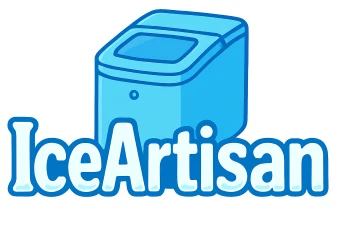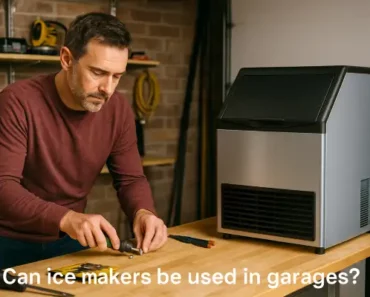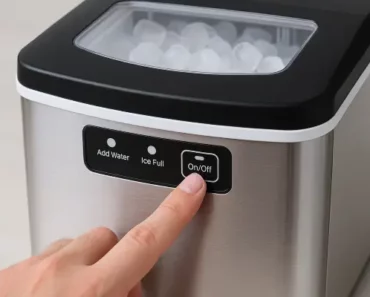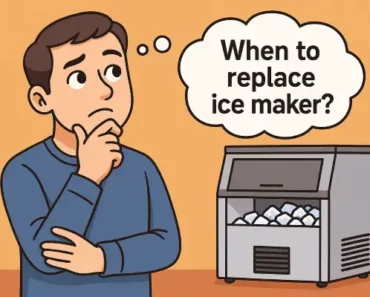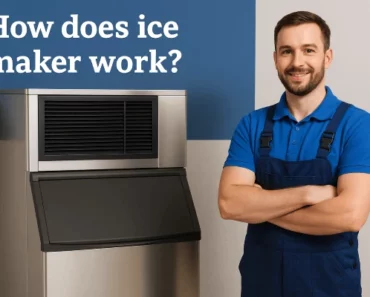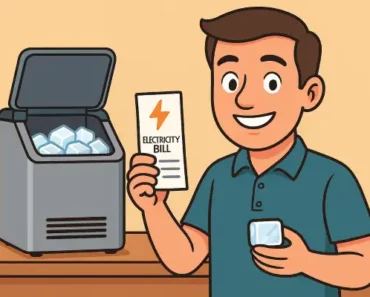Learning how to make clear ice in ice maker is something every housewife I met asked me. Standard countertop ice makers typically produce cloudy, opaque cube or bullet ices that melt quickly and not visual appealing. This cloudiness occurs when air bubbles and impurities become trapped during the freezing process—a common limit in household ice makers.
Bad news is that if your countertop ice maker is not designed to make clear ices, it may never achieve the crystal-clear perfection of the real deals. Good news, however, is you can use my guide of “How to make clear ice in ice maker?” to make some simple adjustments that can noticeably improve ice clarity. Still, I advise you to consider buying the best clear ice maker for best results.
For my dearest audiences who don’t want to spend money to replace an existed appliance in their kitchens, luckily we can improve the clarity of our clear ices in ice maker. Let’s scroll down to this guide.
I’ve made a comprehensive “Ice Maker FAQ” series collecting all common ice maker problems to help Ice Artisan readers quickly troubleshoot their ice maker units.
- ⚖️ Countertop vs undercounter ice makers
- 👍 Are portable ice makers worth it?
- ⚡ How much electricity does an ice maker use?
- 💧 Does an ice maker use a lot of water?
- 🪣 Do ice makers need to be drained?
- 🚫 Can ice makers cause water damage?
- 🚰 Do ice makers need water lines?
- 🔊 Are countertop ice makers loud?
- 😭 Do ice makers make a lot of noise?
- 🔗 Are countertop ice makers safe?
- ⛺ Can ice makers be used outdoors?
- 🔌 Can ice makers be left running all the time?
- 🚗 Can ice makers be used in RV?
- 🗄️ Can ice makers be installed in cabinets?
- ❄️ Do portable ice makers keep ice frozen?
- 🛠️ Can ice makers be used in garages?
- 📄 Do ice makers store ice?
- 🚀 How do ice makers make ice so fast?
- 💡 How does ice maker work?
- 🎰 How does a commercial ice maker work?
- 🛠️ How to install an undercounter ice maker?
- ❄️ How to make clear ice in ice maker?
- 🪣 How to increase ice production in ice maker?
- ⏳ How long does an ice maker take to make ice?
- 🔗 When to replace ice maker filter?
- ⏱️ When to replace ice maker?
- 💡 How to clean ice maker?
- 😭 Why does my ice maker smell bad?
- 🫗 How to drain an ice maker?
- 🪣 How to unclog an ice maker?
- 🔗 How do I unstick my ice maker arm?
- 💧 How to fix ice maker leaking water?
- ❄️ Why is my portable ice maker making too much ice?
- 🥵 Why is my ice maker hot?
- 🔌 What happens if you don’t turn off the ice maker?
- 🧊 How to fix ice maker not making ice?
Ice Artisan‘s best picks
How to make clear ice in ice maker?
In short, to make clear ice in your countertop ice maker, the best way is try using room-temperature filtered or distilled water, and don’t forget to clean your machine regularly. Learning how to make clear ice in ice makers starts with understanding why it is cloudy first. In standard countertop ice makers, cloudy ice forms because water freezes rapidly from multiple directions, trapping air bubbles and minerals within the ice structure.
Unlike commercial ice makers with specialized equipment, homeowners with budget ice makers can’t reliably get clear ice. Even when an affordable countertop model are specifically advertised for crystal-clear ice, I find the results not always good.
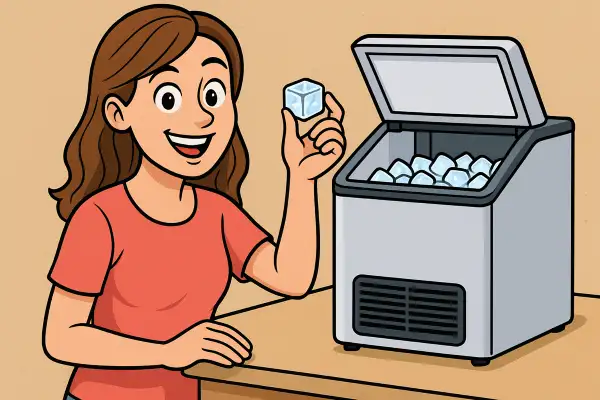
If you don’t want to invest in the best clear ice maker anytime soon, it’s very difficult to convert your existing bullet ices into clear ices. However, here are some methods to improve the clarity of your current ice.
1, Use filtered water in your ice maker
The quality of water used in your ice maker plays the most critical role in determining ice clarity. Tap water contains various minerals and impurities that become concentrated during freezing (reason for its cloudiness). Using filtered water removes many of these impurities. For better results, distilled water eliminates all minerals and can produce noticeably clearer ice in most countertop ice makers.
It is recommended to use room-temperature water instead of cold, as it often produces clearer ice. This happens because warmer water contains less dissolved oxygen, which means fewer air bubbles get trapped during freezing.
2, Consider boiling water first
Like I said earlier, the quality of water is the most important factor to make clear ice in your current ice makers. When boiling, the water can remove some dissolved gases that may contribute to the cloudiness of your ices. Because the high temperature decreases gas solubility in liquids, leaving fewer gas molecules to become trapped during freezing, which reduces cloudiness in ice.
However, I must say the effect is rather limited, and you still need to let your water cool down to room-temperature before pouring into your countertop ice maker.
3, Clean your ice maker regularly
I made a thorough guide on “How to clean an ice maker” to help you ensure that your ice maker always clean. Why? Regular maintenance greatly impacts ice clarity. Cleaning your ice maker thoroughly every 2-3 weeks prevents mineral buildup that affect your clear ices.
There are a few things you can tweak with your ice maker. If your countertop ice maker has a feature allowing different ice thickness levels, consider try the largest setting. Thicker, slower-formed ice usually develops with better clarity. That’s why many people even choose to use slightly warm water to slow down the freezing process.
You should remove and transfer your ices into an airtight ice bag immediately, so the ices don’t absorb odor from the ice maker container, which makes it cloudier. Or better, you can add one silicone ice trays into the usual ice maker’s bin, to prevent the odor absorbing by the ices.
The frequency of use affects ice clarity too. Ice makers that sit unused for extended periods develop more mineral deposits. Regular use keeps water circulating through the system and reduces buildup. If you don’t use your ice maker much, consider emptying, drying, and cleaning it between uses.
4, Use clear ice molds with directional freezing
For people who love tinkering, some even implement DIY modifications to their budget ice makers. One approach involves insulating portions of the ice-making chamber to create directional freezing similar to what’s inside the clear ice maker. Well, it voids your warranty for sure, but not always the budget ice maker comes with a good coverage, either.
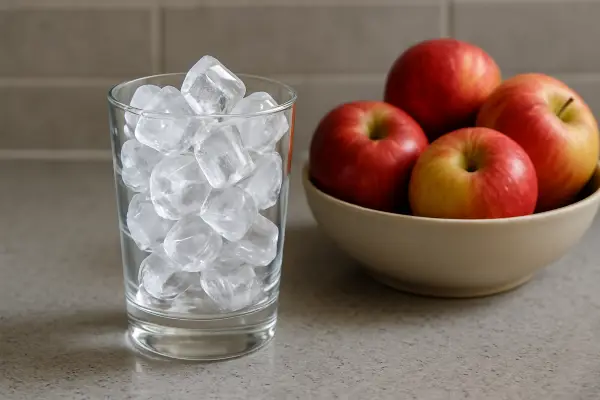
For all the methods to make clear ice in your ice maker, I hope that you’re realistic about your expectations. Don’t make up your hope that your budget ice maker will fully transform into the best clear ice maker, which are designed specifically for making clear ices. If you’re not into good-looking ices, my guide is a perfect way to balance between cost and result.
You can try combining all 4 methods above, but I must advise against the fourth method, because it can void your warranty, and you must make sure you know what you’re doing. The result is usually not worth your effort, so think carefully. Also, you should remember my article of “Do ice makers store ice?”, if you make clear ices successfully, you should take the ices out of your ice maker immediately.
Conclusion
While perfectly clear ice may be difficult to achieve with budget countertop ice makers, you can still get significantly better results with a few simple adjustments. Don’t worry about achieving perfection—even small improvements enhance your beverages without requiring expensive undercounter clear ice makers. These practical techniques has a good balance between quality and convenience for everyday use, giving you better ice without breaking the bank.
